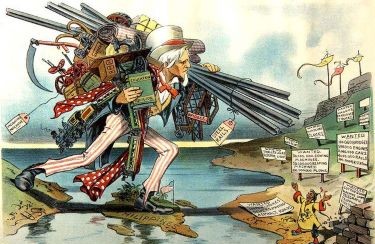The roundtable discussion format of the course will set up a discursive and exploratory style of learning. As the teaching team brings together scholars who have studied the topics from different disciplines, you will explore multiple points of view and learn how to work with visual evidence as primary sources to assemble arguments.
For teachers, the course presents a number of units developed for the MIT Visualizing Cultures (VC) project. The instructors are the authors who created the VC resource, and the course provides a pathway into the VC website content. The VC website is widely taught in both secondary and college courses, and is the primary resource for this course. Educators can selectively pick modules that target needs in their classrooms; the course can be used in a “flipped” classroom where students are assigned modules as homework.



